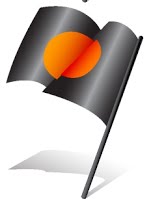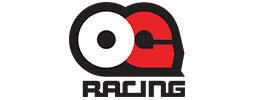If you have a passion for motorsports, you don’t have to drive to be part of the action. Come join the fun. SCCA flaggers can be found at every SCCA Road Race event across the country and staff Pro Racing events all across North America.
Flagging and Communications, the F&C people, can be found all the way around the course on any race day. Next to the drivers, the flaggers are the most visible people on the track. We are a very important part of the race. We keep the track clean, respond to incidents and communicate with the drivers. The F&C folks use flags and hand signals to communicate track conditions to each driver. F&C serves as first-responder to any incident on course. Communications are continuous with Race Control maintaining information flow to and from the operating stewards. F&C people also staff Race Control working directly with the Operating Stewards.
When an accident, incident, or emergency situation occurs we are the first people on the scene. We are the people that run out there with fire extinguisher in hand when something goes wrong.
Our job is to assist the driver and assess their condition, assess the scene and evaluate it and request emergency equipment or help when needed. We are constantly assessing the racing surface, watching for oil or debris and dealing with it as it occurs. Between race sessions and sometimes during sessions we will sweep the track or clear it of debris.
We observe competitors for driving behavior and mechanical condition of their cars and keep Race Control updated on any developments.
To quote a former WDCR Flag Chief, “To be a good flagger, you must employ many of the qualities that you need to be a good driver – concentration, situational awareness of what is going on in the race, the ability to keep your cool when things get hairy, and the ability to multi-process a lot of inputs.”
Our people are well trained in helping keep the track activities organized and efficiently moving along with racing and schedules.
We put in a full day every race day.
We are the ultimate super fan. We are unavoidably part of the action.
When a driver sees someone in white responding they know somebody is there to help.
There is a mutual respect between corner workers and drivers. Neither can do what they do without the other.
You can’t get any closer to the action all day long without being in a car.
If you think you would enjoy being close to the racing action and like working outdoors, no matter the weather, you should consider F&C as a specialty. If you ever have said to yourself “That looks like fun, I would like to try it” and “How can I get involved?”, it's as easy as showing up at the track and saying “I want to help.” You can also contact the Flag Marshals by email at FandC@wdcr-scca.org.
If you would like to come out and join us, you should plan to dress appropriately for working outdoors in the weather rain or shine. Layering of clothing is recommended to aid you in adjusting to changing conditions. We suggest you dress with the outer layer in light colors (white if you have it). Please, no yellow or red clothing. You should wear long pants and long sleeves, also boots or closed toe shoes that will be comfortable to stand in for extended periods. Availability of rain gear is advised, again, please, no yellow or red. The range of weather can be quite dramatic. Our time outdoors can be spent in anything from heat and humidity to bitter cold, rain and sometimes even a snowflake or two may pass by your corner station. Please review our Guide to Flags below.
At the end of the day on Saturday there is a social gathering for all volunteer workers. As a volunteer worker you are always invited and welcome to attend.
Guide to Flags
The green flag when displayed at the Starter’s Bridge indicates the course is clear and racing is underway.
Blue with a yellow or orange slash indicates another car is rapidly overtaking a car and may attempt to pass. Check your mirrors! This is an advisory flag.
Yellow and red stripe surface flag indicates oil, gas, water, gravel, sand, mud, rocks or some other debris is on the track surface. Traction may be compromised.
A white flag tells a driver a slow-moving vehicle such as a car with mechanical trouble or an emergency vehicle is moving well below race speed on the racing surface.
The mechanical flag indicates a driver has a mechanical problem and should come into to the pits.
When a red flag is displayed it is shown at all stations and at Start. The session has stopped and drivers must come to a controlled stop on the side of the race course.
A single stationary or “Standing” yellow tells drivers to slow down because something hazardous is off of the race surface but in the area, such as a vehicle off course, an emergency vehicle attending to a disabled car, an exposed corner worker in an unsafe area. Passing is not allowed in the zone covered by the single standing yellow.
A waving yellow indicates that drivers must slow down and be prepared to take evasive action or stop to avoid an obstruction in the roadway. Passing is not allowed in the zone covered by the waving yellow.
Double yellow flags displayed at all stations mean that a full-course caution is in effect. Drivers must slow down. Passing is not allowed anywhere on the track.
An open black flag, displayed by Start and Black Flag Station with a number board displaying a driver’s car number. This open flag tells a specific driver to come to the pits to meet with officials. When black flags are displayed at all corner stations, the race session has halted and cars must come into the pits.
A closed or furled black displayed with a number board at the Start Bridge is a warning to a driver that improper actions have been observed.
A checkered flag tells drivers that the race or session has ended.
Emergency Reports
Hopefully we'll never have need of these, but the nature of the sport, the conditions in which we compete, and the number of participants make having a plan essential.
Radio protocol still holds for an emergency situation with some changes. First, the corner with an emergency to report will announce themselves at their first opportunity with "Station XX Emergency" and wait for Control to acknowledge. If acknowledgment does not come quickly, try the call again and stay calm.
Control will tell all stations to hold all calls, will hold start and tell station XX to go ahead with their report. Once again, stay calm and give full details of the situation so Control can decide how to proceed. Control will contact the appropriate Safety Stewards and Committee members to handle the problem and will provide further direction to the course captains as appropriate.
As a course captain, your job is to report the situation calmly, not to try and decide what should be done nor to control the event. The extra 10 seconds needed to make a calm report is usually more than made up for in a more timely, correct response.
























